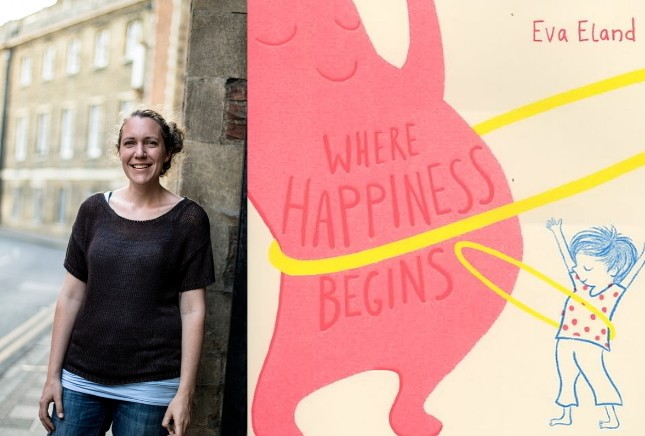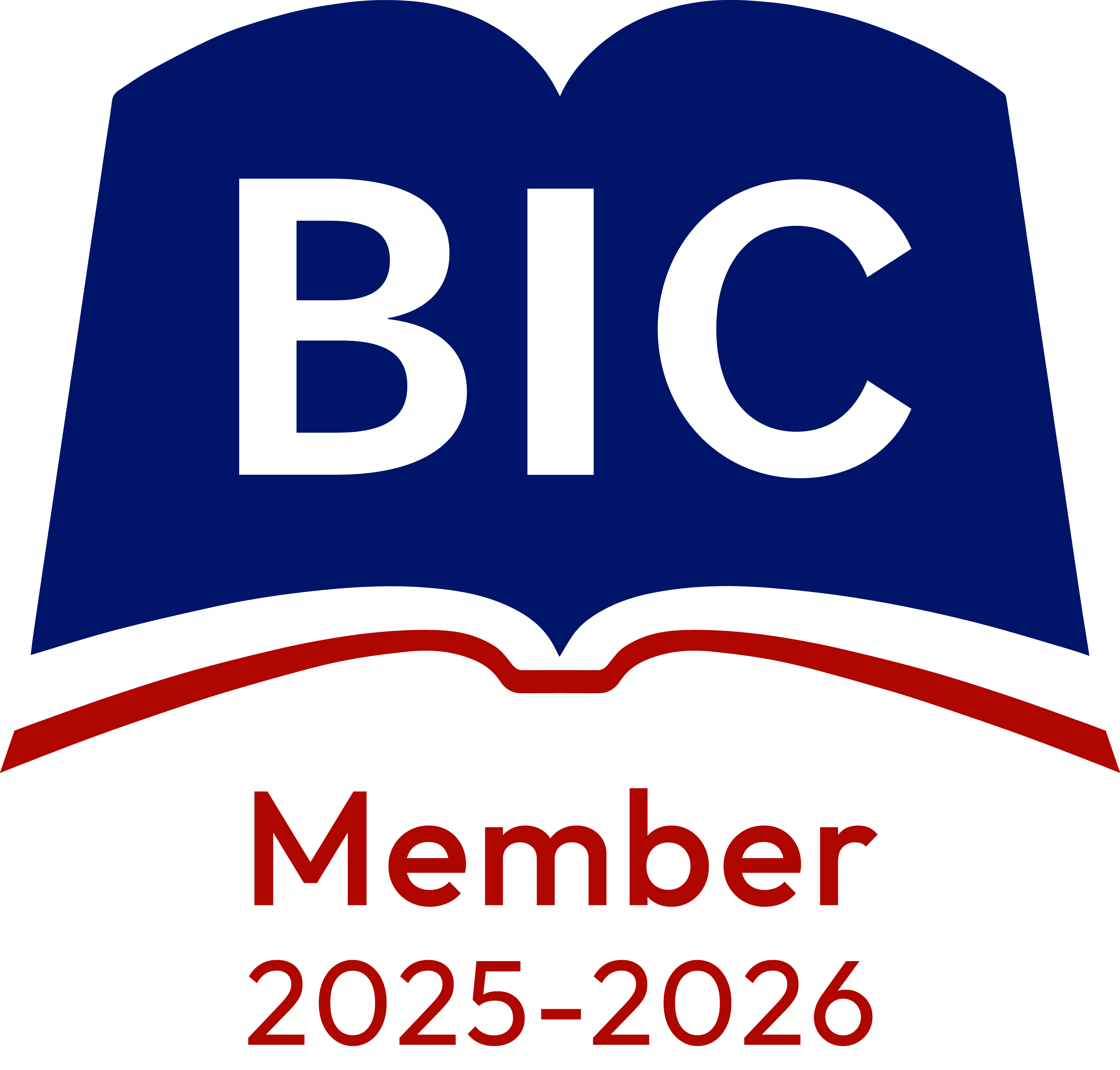Please note: We will continue to deliver your books and furniture until Thursday 18 December for schools, and Tuesday 23 December for public libraries. We will then close for the Christmas break, with deliveries resuming from Monday 5 January 2026. We wish all of our customers a very merry Christmas and a Happy New Year!
For help, advice and telephone ordering call our team on 0121 666 6646
Are you sure you wish to delete this basket?()
This action cannot be undone.
Sorry, something went wrong
Please report the problem here.
Eva Eland Where Happiness Begins Q&A

March 3rd 2021
Eva Eland is an author, illustrator and artist living in Amsterdam with her husband Mauri, and their baby, Livia. Eva's debut picture book When Sadness Comes to Call was published by Andersen Press in 2019 and has been translated into 20 languages. It was shortlisted for the World of Illustration Award, longlisted for the Kate Greenaway Medal and the UKLA Book Awards and won the V&A award in the book cover category and also the Klaus Flugge Prize for the most promising and exciting newcomer in picture book illustration.
Eva's latest picture book Where Happiness Begins has been longlisted for this year's Kate Greenaway Medal. We spoke to Eva to find out more.
Q: Congratulations on your longlisting for the Kate Greenaway Medal for When Happiness Begins! The book contains some important and complex themes – how do you go about conveying some of these themes in a way that can be understood by young children?
Thank you! I feel so honoured to have my book included in the longlist for Kate Greenaway Medal, alongside so many beautiful books.
There is so much that can be said about happiness, so many different books that could have been made, that it took me some time to figure out how to address the topic. I read a lot about happiness to help me understand it better, but I think it might have only made me more confused. What was more helpful, was thinking of my younger self, and wondering what I would've liked to have known as a child. This way I realised the book needed to be as honest as it could be, and needed to say that you don't have to be happy (or can be) all the time. I also wanted to show that happiness can look different for everyone, and that it's up to each individual to discover – and not for others and the media to dictate (even though that's how it can feel sometimes). To open up to the feeling of happiness can feel vulnerable, as other emotions might surface as well and we might worry that we could loose it, or that we might be hurt when we let our guards down. This sense of trust and leaning into happiness is something that I wanted to get across as well.
They way the book is structured, almost like a hero's journey, gives the message and conclusion more impact I hope, so it's more then a mere collection of philosophical and abstract statements about happiness. There is a child and various situations and feelings that we can relate to as the reader.
Q: How might teachers use the book to help children understand and get to grips with emotions such as happiness and sadness?
I think every spread in the book, poses a lot of questions, that can be used as conversation starters. Just talking with children about times they were happy, how happiness looks for them or where it might be hiding sometimes. Which happiness can they see reflected in the book and do they recognize, and when did happiness seem far away for them? Starting to ask these kind of questions and mapping their own inner landscape of happiness is a good starting point I think. You can delve deeper into any of the related subjects, like asking how you might care for happiness, like one of the lines in the book, and using it as a brigde to start talking about self care and basic needs. You might talk about the elusive quality that happiness can have and wonder together if you can capture it. What about the things that get in the way sometimes, like expectations, disappointments, bad luck? How can we negotiate all these things and emotions that we can't control? Can we find a place within that can anchor us, so we can be still enough to recognize happiness and embrace it, when it's there? Can you be happy and sad at the same time?
Obviously, we never stop learning as we can't really predict where life will take us, but every spread in the book I think is an invitation to talk about these things and share ideas, possibly through making drawings where the children can decide how their sadness or happiness looks like. What colour does it have? And what narrative might be told through the composition of the drawings? Illustrations in the book or other work can be used to discuss and learn more about tools we have at our disposal as illustrators, like colour, composition, the expressive quality some materials have, visual metaphors etc. Picturebooks are very rich resources and using them can be a playful way to learn more about storytelling, language and images, and at the same time giving children more tools to express themselves, which I think is a very valuable skill to have.
You can also write a letter to sadness and ask it what it might need, or make a guide for happiness, or a box to start collecting happiness in, something that children can add to every day, and take inspiration and comfort from in times they feel might feel low. The possibilities are endless and I'm sure teachers will have so many ideas of their own and will know what suits the children they are working with.. There is also a great teacher resource made already by the CLPE that can be found on their website or mine www.evaeland.com.
Q: Can you tell us a bit more about the processes involved in writing and illustrating the book? Did you start with the text first, or the illustrations, or perhaps a single concept?
In this case I started reading, drawing, writing, talking with people, thinking during long walks, all at the same time. I accumulated many ideas and thoughts and had to wade my way through them in the end, until I settled on a rough outline for this book. It did occur to me that the process of trying to find happiness, actually looked a lot like my creative process for this book. Many times happiness felt elusive, and difficult to capture in a book – but I had great company during the long journey, namely my editor Sue Buswell and art director Beccy Garrill from my publisher Andersen Press, and together we found a way to tell this story.
Q: Your debut book, When Sadness Comes to Call was published in 2019 and was also longlisted for the Kate Greenaway Medal. Did you intend for the two books to work as a pair?
Yes, Where Happiness Begins is definetly a follow up of When Sadness Comes to Call, though it can also be read independently. Just like with the first book, I chose for a character to represent this big feeling, and a limited colour palette. I also address the reader directly and I hope that in both cases, the books deal with the feeling in a universal but engaging way, where the reader can reflect on the text and images and make the story their own.
Q: Did you always want to be an author and illustrator? When did you start writing?
First and formost, I've always been a reader and devourer of books. As a child I wanted to become a writer (I don't think I realised that drawing could be a profession – or perhaps I thought I wasn't good enough at the time). During my bachelor at the Gerrit Rietveld Acadamy in Amsterdam I initially started studying Text and Image, after which I changed to Audiovisual Design. I don't think I realised that I could actually build a career as an author and illustrator, especially not in the Netherlands as it's such a small market. After graduating and working in a bookstore and in child care for a few years, I felt an irresistable pull to study Children's Book Illustration at the Cambridge School of Art, even though I knew it could be very hard to actually build a career in this field. This is where I started writing and illustrating for children.
Q: Are there any other children’s authors or illustrators who have particularly influenced you – who do you admire?
There are many author and illustrators who's work I admire greatly, sometimes for very different reasons. Some that come to mind are Tove Jansson, Bruno Munari, Blexbolex, Jon Klassen, Carson Ellis, Beatrice Alemagna, Gerda Dendooven, Yohee Joon, Kitty Crowther, Isabelle Arsenault, Shaun Tan, William Grill, Maurice Sendak, Max Velthuijs, Fiep Westendorp, John Burningham, Wolf Erlbruch... I could go on for much longer actually. But perhaps the ones that have influenced me just as much in the last few years were also my tutors at the MA, like Pam Smy, Martin Salisbury and Katherina Manolessou, and colleages who's work I've been following or discussed projects with, like Margaret Sturton, Katie Brosnan, Joseph Namara Hollis, Debbie Greenaway, Viola Wang, Flavia Z Drago, Junli Song, Puck Koper, Maria Jezus Guarda, Beth Waters, Marina Ruiz... only to name a few. I was surrounded by so many talented people at the MA, which was very inspiring and also motivated me to work harder. It's a time I think back of very fondly, as it was also a time where I was able to create more freely.
Where Happiness Begins is out now.
View the Kate Greenaway longlist for 2021.




